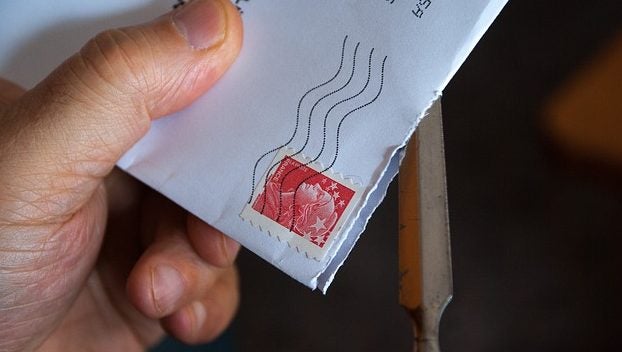When will Prince Edward County tax bills be sent out?
Published 3:09 am Tuesday, October 31, 2023
|
Getting your Trinity Audio player ready...
|
Where is my tax bill? That’s a question The Herald received multiple times over the last two weeks from Prince Edward County residents. And the answer is coming soon. Prince Edward County tax bills will go out later this week, county officials told the paper.
Now, to be clear, no rules were broken here. Section 58.1-3912 of the Virginia Code only says that a city or county treasurer has to mail the tax bills “not later than 14 days prior to the due date”. Since taxes are due on Dec. 5 in Prince Edward County, there’s still several weeks left before they’re required to be mailed.
But residents understandably would like to see the bills go out earlier, so they a) know how much they owe and b) have more time to come up with a payment plan.
“I would like to have the bills out earlier but I would need to get the tax information (in the) first part of October to get them out in the middle of October,” said Prince Edward County Treasurer Donna Nunnally. “The Commissioner of the Revenue does the assessing and the Treasurer’s office does the collecting. We received the information for the real estate taxes on Oct. 17 and (it was) immediately sent to the printers. The personal property tax (information) was received on Oct. 23 and sent to the printers.”
Nunnally said the county switched to a new printing company this year for the bills, because of what she called “difficulty and delays” with the prior vendor. As soon as the printer received the data, on Oct. 17 and Oct. 23 respectively, the company confirmed receipt and got to work. Nunnally said that work should be finished within the next few days.
“We are hopeful that the bills should be mailed out to the Prince Edward taxpayers (later this) week,” Nunnally said.
How Prince Edward County tax bills work
Nunnally said she understood that people were frustrated, but emphasized that everyone was working to get the bills out as quick as possible.
“The Commissioner (of the Revenue) runs her books, then we receive the tax information for the bills. So the books are sent off a day or so before we receive the files,” Nunnally said. “I know they have worked hard at getting everything done for the books.”
To be clear, when Nunnally says tax books, she’s referring to the annual document that includes all the tax rates, assessed values and taxes levied within the county.
Also slowing the tax bills was a change this year in the personal property tax relief. At their Tuesday, Oct. 10 meeting, the Prince Edward Board of Supervisors voted unanimously to reduce the Personal Property Tax Relief (PPTR) percentage to 25.75% of assessed value. That’s down from 37.50% last year. The reason for the change, officials explained, is the lower values for vehicles.
Last year, the values for used vehicles climbed, thanks to an inventory shortage at the time. Beginning in 2021, the number of new vehicles available dropped, due to COVID-19 and the global supply chain. Last year at this point, stores were selling most, if not all of their stock orders months before they arrived on the lot. As values climbed, so did the amount people owed on personal property taxes. That meant used vehicles were artificially selling for much higher than previous values, sometimes nearly double. But as that value increased, so did the personal property tax burden on local residents.
To ease that burden, supervisors in October 2022 significantly raised the PPTR percentage, reducing what residents owe. But now, as values are dropping back to normal, supervisors decided it was time to bring the tax relief back down as well.
What is a tax relief percentage?
In Virginia, cities and counties follow what’s called the Personal Property Tax Relief Act. The state law orders that all localities have to subsidize at least a portion of the taxes owed on the first $20,000 of a vehicle’s assessed value. Each year, the city or county sets their PPTR rate to do this, reducing the final bill owed by a resident.
For example, let’s say a city or county sets the PPTR rate at 24%. That means for a car assessed at a value of $20,000, the resident would owe $684. Then let’s say the next year, the city or county sets the rate at 35%. If the vehicle’s value remains the same, that resident would only pay $585, saving nearly $100.






